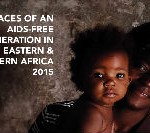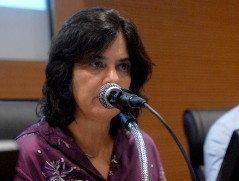Last month the first Cuban physicians arrived in Brazil under a new government programme to work in underserved parts of the country, both rural and urban. Francisco Eduardo de Campos tells Claudia Jurberg why the Mais Médicos (More Physicians) programme is necessary.
 Francisco Eduardo de Campos has dedicated much of his career to the development of human resources for health, in particular for Brazil’s vast public health sector. He is a professor in the department of preventive medicine at the Federal University of Minas Gerais, where he obtained his medical qualification (1974), Master’s degree (1977) and PhD in public health in (1985). He is the executive secretary of UNASUS, the Brazilian Open University of the Sistema Único de Saúde (Unified Health System) and a board member of both the Global Health Workforce Alliance and the Ministerial Leadership Initiative from the Harvard School of Public Health. From 2005 to 2011, he was the Secretary of Education and Health Labour Management at the Ministry of Health and coordinator of the Interministerial Committee for Education and Health Labour Management.
Francisco Eduardo de Campos has dedicated much of his career to the development of human resources for health, in particular for Brazil’s vast public health sector. He is a professor in the department of preventive medicine at the Federal University of Minas Gerais, where he obtained his medical qualification (1974), Master’s degree (1977) and PhD in public health in (1985). He is the executive secretary of UNASUS, the Brazilian Open University of the Sistema Único de Saúde (Unified Health System) and a board member of both the Global Health Workforce Alliance and the Ministerial Leadership Initiative from the Harvard School of Public Health. From 2005 to 2011, he was the Secretary of Education and Health Labour Management at the Ministry of Health and coordinator of the Interministerial Committee for Education and Health Labour Management.
Q: Brazil has a relatively high physician to population ratio (1.8 per 1000), but recently the government decided to bring in foreign professionals to work in your country. Can you explain this paradox?
A: The current labour market for physicians in Brazil is buoyant. Studies show that we do not have enough physicians to meet increasing demand in the public and private sectors. That inability to meet demand in these sectors makes it even harder for the government to deploy physicians in rural and poor urban areas. But this failure is incompatible with a health system mandated by the constitution to provide universal and equitable health care to all citizens. That is why the Brazilian government has decided to act decisively in this matter by training more physicians and importing others on short-term contracts to fill current gaps. In Brazil, fewer than 2% of physicians are educated abroad. In some countries, this proportion is as high as one third. That’s why it’s perfectly reasonable for Brazil to open its market to foreign physicians.
Q: The government provides incentives to encourage Brazilian physicians to work in poor urban areas and remote parts of the country? Why are they still reluctant to go?
A: Brazil not only faces a shortage of physicians; these professionals are also maldistributed. This is not only a problem in Brazil, but in many countries, as shown by the World Health Organization (WHO). Physicians are reluctant to work in these parts of the country for several reasons. Most of Brazil’s medical students belong to Brazil’s economic and social elite and prefer to live in affluent urban areas. Poor urban and rural areas are not attractive to them or any other professionals with similar backgrounds. But while a lack of qualified teachers, architects, engineers, artists, journalists, singers or musicians in small towns does not result in life-threatening situations, a shortage of physicians does and, therefore, deserves more attention. There are many barriers to attracting health professionals to work in those areas, including poor infrastructure, fear of violence, few career development prospects and unreliable remuneration (due to precarious hiring practices). In addition, there are few job opportunities for spouses or good schools for their children. Moreover, they may fear professional isolation – having no one to consult on a difficult case – although this problem could in part be addressed by e-health programmes, such as those offered by the Open University of the SUS.
Q: The government wants to create a mandatory contract for newly qualified physicians from public institutions to work for two years in the Sistema Único de Saúde (Unified Health System). What do you think of this plan?
A: Whether in the form of civil service or post-graduation employment, several countries link the attainment of professional medical qualifications to an effort to address public needs. On the one hand, the plan can generate a return on the public investment made in the education of physicians, and, on the other hand, it can be a way to change the image of rural areas – which are often seen as undesirable places to work – and to counter the view that primary health care is somehow “second rate.” The public interest must always prevail over the interests of individuals or associations representing health professionals. That’s why I agree with the solution proposed by the Federal Government. But I fear that extending from six to eight years the length of time it takes for a physician to graduate in Brazil might not be the best approach, especially given the additional four years on average that it takes to complete medical residencies. Our resources are limited and may not cover all the salaries of physicians who may charge more than before to compensate for the years of foregone salaries due to additional training. The alternative, which has just been approved by Congress, is to require that the first year of all medical residencies is done in a family health-care setting, starting in 2019. Either way, there is no doubt that a large proportion of physicians must be well qualified in primary health care.
Q: The Mais Médicos programme allows for the limited importation of foreign physicians to work in underserved areas. Some people say that their work could be substandard or that they will compete with Brazilian physicians. Are these fears justified?
A: Foreign professionals can only join the Mais Médicos programme if they are licensed to work in their own countries. I don’t think that the countries from which we are likely to attract foreign graduate physicians have poor educational systems, so I am not concerned about their qualifications. Furthermore, they won’t compete with Brazilian-trained physicians because they will only be granted temporary (three-year) licences restricting their practice to the facilities where they will be placed. Only if they were to pass the national revalidation exam could they apply for a full physician’s licence and compete with Brazilian professionals.
Q: During the World Health Assembly (WHA66) in May, Brazil impressed other countries with its high physician-to-population ratio. Which government bodies in Brazil are responsible for building and maintaining the health workforce?
A: Under the Brazilian Constitution, the Ministry of Education is responsible for the education sector. However, when it comes to health workers, this responsibility is shared with the SUS. In recent years, these two bodies have strengthened their collaboration in several ways. For example, they have been working together through the Interministerial Committee for Education and Health Labour Management, established in 2007. Together, the ministries are responsible for several initiatives aimed at improving mid-level technical education, as well as undergraduate courses, medical residencies and other graduate training programmes for all kinds of health workers. They also provide continuing medical education to keep physicians’ skills up to date.
Q: What were the main challenges for developing the health workforce in recent years?
A: Since the 1970s, with the establishment of an interministerial programme for human resources, there has been a consensus on what the main problems are. At that time, the programme involved four ministries: education, health, social security and labour. Since then, we have managed to address some problems with the help of the Pan American Health Organization. For example, we developed a strategy for training nursing assistants (who are being phased out) to become mid-level nurses. The discussions between these four ministries were not always easy, as each sector had its own priorities. However, this dialogue continues today. The Conselho Nacional de Saúde (CNS) (National Health Council, the supreme health decision-making body in Brazil) has a very active human resource committee that examines all proposed policies before they are submitted to the full council. Similarly, the Tripartite Commission (of federal, state and municipal health secretaries) has a strong human resource committee. Every policy approved by ministerial decree must first be examined by these two committees, in which civil society, including patients and health workers, are well represented.
Q: Could you compare Brazil’s health workforce to those in other emerging economies?
A: It’s difficult to make comparisons because, as I mentioned, Brazil has unique structures governing health workforce issues. Yet Brazil has been praised at several international events as a country that understands the core function of the health workforce as an essential building block of a complex health system. The Brazilian health system encourages discussion between all players – including civil society, health workers and health authorities – to improve the health system through subsidies, regulations, incentives and other mechanisms.
Q: For example?
A: The reform of the medical school curricula. Currently, there is a tremendous gap between the needs of the SUS and the dominant model of the curative, hospital-centred approach that forms the basis of our medical courses. About 400 academic institutions that are regulated and financed by the Ministry of Education are now receiving financial incentives from the Ministry of Health to shift the emphasis of their curricula from tertiary to primary health care by providing grants to teachers, students, professors and health professionals. In addition, the Ministry of Health recently became an important funder of medical residencies. Between 2010 and 2013, it doubled the number of these scholarships to increase the number of qualified physicians training in priority specialties and achieve more equity in the public system, as required by law. No other country has taken such a wide range of health workforce measures with such strong political will.
Q: Brazil has come a long way in terms of building a public health system based on universal health access. But health care was a key theme during demonstrations across the country earlier this year. Why is the public dissatisfied with the SUS?
A: The system is underfunded and overstretched. Brazil used to impose a financial transaction tax from 1997 to 2007 (0.25% between 1997 to 2002 and 0.38% from 2002 to 2007). The revenue raised by this levy made a substantial contribution towards the public health budget. However, in 2007, the government lost a vote in parliament to continue it and the levy was dropped. As a result, the SUS lost about a quarter of its income. Although it is hugely underfunded, the system continues to perform miracles in both primary and tertiary care. The waiting times for secondary care are often too long and some hospitals are in a precarious state. Nevertheless, these problems will not be solved by privatizing the health system, as some have suggested. What we need is a review of the management model, giving it more flexibility, and an adjustment of its funding. These are the key factors for improving the quality of the care and services provided by the SUS.
Q: What is Brazil’s legal basis for universal health care?
A: The Brazilian Constitution has five chapters dedicated to health. It states that access to health care in the country should be public, free, universal and equitable to all Brazilian citizens, rich or poor. It is one of the most generous and socially inclusive health programmes in the world. But, while the legal basis of this 1988 constitution and other laws are important, what matters most is the health awareness of the population. The Brazilian public health movement, which resulted in the creation of the SUS in 1988, grew alongside calls for re-democratization of the country, to end the dictatorship. Thus, it was part of the general call for better public services and directly influenced by major segments of the population. This is particularly true of the urban poor and unionized workers. With all its difficulties, the SUS is not just a technical project: it is the product of the political will of the people.
Source: Bulletin of the World Health Organization 2013;91:806-807. doi: http://dx.doi.org/10.2471/BLT.13.031113








